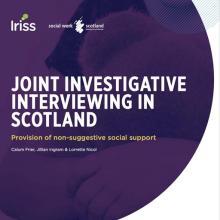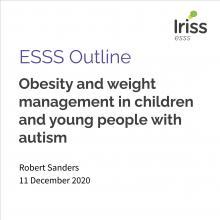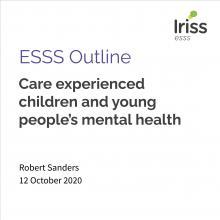Key points
- Communication with children and young people is at the heart of child and family social work
- Communication involves social workers using a range of methods and techniques like touch, play, signing, body language, writing, drawing, activities, using symbols and other specialist tools to engage and communicate with children and young people
- Social workers need to use their skills sensitively and creatively to make spaces for communication with children and young people
- Research shows how the context, organisation and systems of social work can impact negatively on the ways in which social workers engage and communicate with children and young people
- The relationship between children, young people and their social workers is more important than communication itself
Introduction
Communication with children and young people can take many forms including: direct talk, listening, writing, touch, facial expressions and body language, signing, and using specialist tools or techniques. Social workers communicate with children and young people for a range of reasons. They communicate directly with children and young people to learn more about them and their families’ circumstances. They also communicate with children and young people to ascertain their views about decisions and matters that affect their lives. Put simply, social workers have to be able to connect, engage, support, talk and listen to children and young people if they are going to make a positive difference in their lives.
This review presents what research tells us about social workers’ communication with children and young people in everyday practice. It also introduces key findings from an Economic and Social Research Council (ESRC)-funded, UK-wide study of social workers’ communication with children and young people. This study was carried out from 2013-2016 and is referred to in this review as the Talking and Listening to Children or TLC project.
Why focus on social workers’ communication with children and young people?
The United Nations Convention on the Rights of the Child (UNCRC) sets an important legal standard for how we consider children and young people and the significance of social workers’ communication with them. Article 12 establishes the child’s right to express their views in all matters that affect their lives and for these views to be given weight according to the child’s age and maturity. Across the UK, this right has been enshrined in law, policy and in practice guidance, and in Scotland, this means the Children (Scotland) Act 1995 and the Children’s Hearing (Scotland) Act 2011. Children and young people’s participation must take place not only in formal legal processes, but in everyday social work practice. The rights of children and young people to be heard are also fundamental to the Codes of Practice for Social Service Workers with its requirement that workers must ‘protect and promote the rights and interests of people who use services and carers’.’ (Scottish Social Services Council, 2016).
A key question social workers must be able to answer is: ‘How is the child?’ (Butler and Roberts, 2003). In order to answer this, they have to be able to communicate with children and young people. Of course, children do not all communicate in the same way. They may have their own preferred style of communication or have a particular communication need. Social workers must be able to communicate right across the age spectrum, with babies who are pre-verbal right through to young adults. Their work is likely to involve children and young people who have disabilities that affect communication, as well as with children and young people whose first language is not English and who have a range of ethnic and cultural backgrounds. The different ages and stages of childhood, the specific needs and the particular circumstances of different children and young people, together highlight how important it is for social workers to have broad and strong communication skills on which to draw. But communication goes well beyond just talking and listening to children and young people. It also involves social workers using a range of methods and techniques like touch, play, signing, body language, writing, drawing, activities, using symbols and other specialist tools to engage and communicate with children and young people (Winter et al, 2016).
Much of the existing research and evidence on communication with children and young people comes from inquiries into child abuse and serious case reviews. A persistent finding in investigations of cases where children have died or been seriously harmed is that social workers and other professionals have not adequately engaged with, or related to, the children concerned (Ferguson, 2016). These reviews undoubtedly provide important messages about child protection social work and the significance of social workers’ communication with children and young people in this context. However, it is important to keep in mind what inquiries and serious case reviews tell us. They tell us about extraordinary cases of social work where things have gone tragically wrong. They do not tell us about everyday or routine social work practice, nor do they tell us about how social workers and children themselves experience their communication with one another.
What does existing research on social work practice tell us about communication?
Some research provides indirect evidence about social workers and children’s views about practice. This relates mostly to retrospective interviews carried out with social workers and/or with children (eg Luckock et al, 2006; McLeod, 2006; Stalker and Connors, 2003; Thomas and O’Kane, 2000; Whincup 2015; Winter, 2011).
This research consistently demonstrates that children like it when social workers have qualities such as honesty, reliability and consistency (Luckock et al, 2006; Munro, 2011). Whincup’s (2015) study of social workers’ engagement with children highlights further capacities that influence their communication with children. Here children described how they appreciated social workers who cared for them, listened to them (which was linked to social workers’ subsequent actions), were playful (or fun), and were motivated to work with them (this was interpreted as prioritising spending time and meeting with them). In a similar vein, Rod Kippen, an advocate for young people in care, highlights that young people want their social worker ‘to stand up for me and be brave’.
Context, organisation and systems matter
There is a body of research that shows how the context, organisation and systems of social work can impact negatively on the ways in which social workers engage and communicate with children and young people. Factors include heavy caseloads, high levels of staff turnover and a preoccupation with bureaucratic, administrative and technical aspects that are associated with the social work role (Broadhurst et al, 2010; Munro, 2010, 2011).
In recent years there have been significant calls made for social work to reclaim ‘relationship based’ or ‘face-to-face’ practice. The Munro Review of Child Protection (2011) has acted as an important catalyst for this, demonstrating the ways in which social workers struggle to engage and communicate with children and families in meaningful ways because of lack of time, resources and support to do so. The work of Featherstone et al (2014), Broadhurst and Mason (2014) and Ruch et al (2010) have also added weight to arguments for calls reclaiming the importance of relationships in social work practice.
Emotions matter
Ruch (2013) adds another perspective to this in her study of six social workers reflecting on their practice in relation to communication with children. During the research, several themes emerged as impinging on social workers’ communication with children. These included: the unpredictability of physical places where social workers met with children; the competing familial, organisational and professional demands placed on social workers; and, the uncomfortable nature of communicating with children. The last finding is especially important and bears further explanation. Social workers described being uncomfortable for several reasons. There was a mismatch between the demands of the social work task and the ways in which children communicate. Children did not communicate in the linear way that formal assessments, thresholds, evidence gathering or procedures seemed to require. This meant, at times, that social workers were forced to withdraw from cases before they felt their work was done, leading to feelings of anxiety and stress on the part of the worker. Social workers described feeling distressed by the content of what children said and often felt unable to share this because of concerns that emotion may be treated as a sign of ‘weakness or professional inadequacy’ rather than professional sensitivity and attunement to the child’s circumstances. Similar findings about the ‘emotional toll’ of social workers’ communication with children is reported by Pinkney (2011), Winter (2011) and Killen (1996). Meanwhile, Smith et al (2016) describe child and family social work as a kind of ‘social suffering’.
‘Practice-near’ research
Until recent years, there has been little direct research that has observed social work practice ‘as it happens’. Ferguson (2016) suggests that this absence of ‘practice-near’ research is puzzling and creates an important gap in our knowledge. This is especially when we consider the persistent finding from reviews following the injury of death of children known to social work is that social workers have not effectively engaged with them. He argues that practice-near research can help shed light on what and how social workers are prevented from engaging effectively with children. Knowledge about this can contribute to better knowledge about how to protect vulnerable children. Two research projects have conducted practice-near research in England – Broadhurst and Mason (2014) and Ferguson (2010, 2011, 2014, 2016a and 2016b). A third, UK-wide project has just been completed (2013-2016) – the Talking and Listening to Children (TLC) project – on which the author of this Insight was a researcher.
Broadhurst and Mason
Broadhurst and Mason (2014) draw from a small scale ethnography carried out in England to assert that more attention must be given to face-to-face practice in social work research and that the interactions of the social worker is crucial to this. Although their focus is not necessarily about engagement with children, the authors draw from observations of two home visits to illustrate how interactions between social workers and families can shape and frame relationships. They highlight how through micro communication such as: eye contact, touch, facial expressions and body language, trust between a social worker and service user is developed and sensitive issues are able to be discussed and addressed.
Ferguson
Ferguson’s (2011) ethnographic work on ‘intimate child protection’ has begun to explore the dynamics of social workers’ home visits. This work provides vivid accounts of child protection social worker home visits with families. Ferguson’s research has focused on mobilities and multi-sensory aspects of the work. Ferguson (2014) reports how during home visits much of the social worker’s’ time is spent with both parents and children together. This was in part, due to the young age (aged 4 or under) of the majority of the children. Where children are seen separately from their parents, the time spent is often limited and may be inadequate – the norm was between five and 15 minutes and the shortest was two minutes. This was often explained because of work pressures from high caseloads and the expectation that pieces of work with families would be completed in short timescales.
The lack of time with children also related to social workers’ confidence and skills in communicating, engaging, playing and being close to children. The issue of direct contact with children is important given this has been shown by other research to produce risks to children (Munro, 2011). Ferguson notes that most of the meetings with children (where they were seen on their own) took place in children’s bedrooms. He argues for greater consideration to be given by social workers to where they can meet children on their own – where both social workers and children feel comfortable, are not interrupted by parents or made anxious by being so close to home and what that may represent.
Ferguson further notes that while some social workers were confident in relating to children, others were not and said that they wanted further training and to develop skills on engaging with children and their parents. Lefevre (2013) supports this idea. He argues that social work education (both during and post-qualification) needs to more fully address learning, not just about ‘doing communication’, but also about ethical commitments to, and personal qualities for, communication. A final point relates to what Ferguson calls social workers’ ‘individual characteristics, relational styles and capacities to act creatively – or not’ (p293). Here Ferguson identifies the need to deepen our awareness and understanding of how these affect the ways in which individual social workers practice.
In Ferguson’s (2016a) most recent work, his analysis focuses on ‘how children become invisible in child protection’ social work. Drawing from the same research described above, he outlines how time and the organisational culture of social work, as well as the emotional and interactional dynamics of social work, render children invisible. He describes the ways in which the organisational culture, limited time for direct work and inadequate support affect social workers’ preparation for, and experience of, home visits, with consequences for their interactions with children. Ferguson suggests that the emotional demands and complexity of working with angry and resistant parents and family members can leave social workers unable to contain their own emotions, to think clearly and keep the ‘child in mind’. In this way, the very demands of child protection work can act to obscure children and make them invisible.
The TLC Project
The Talking and Listening to Children (TLC) project was an ESRC-funded, UK wide study that focused on social workers’ communication with children and young people. This practice-near research aimed to examine how social workers, children and young people communicate in everyday practice.
The TLC project had three phases: observations of social workers in their workplaces and from 82 visits involving 126 children and young people; video-stimulated recall (VSR) with 10 children and their social workers; and the development of online materials to support social workers. Over half of the visits took place at home and a quarter took place in school. The rest took place in public places (often cafes) or specialist settings including social services’ buildings and secure accommodation. The research set out to answer four key questions:
- What are social workers observed to do when they communicate with children and young people in a range of settings and with a range of aims?
- How do practitioners experience and understand their communication?
- How do children and young people experience and understand their relationships with social workers?
- What factors best facilitate communication between social worker practitioners and children and young people?
The TLC project had four main findings. Firstly, it found that most social workers engaged well with children and used a variety of methods and skills in their practice. There were also occasions when social workers seemed unwilling to communicate except through talking. Few social workers had their own play materials and when they did, they had usually paid for these themselves.
Secondly, all the social workers who took part in the research knew that communication with children is important and necessary. However, they sometimes found it difficult to communicate well, because of structural factors (too much to do – too little time), practice-related factors (unrealistic expectations of others, families’ and children’s apprehensions) and personal factors (their own preferences, levels of confidence and the emotional impact of the encounters).
Thirdly, children and young people had a range of understandings about their encounters with social workers. Some, often taking the lead from a parent, appeared to experience their social worker negatively – as a stranger, a threat, an intruder, ‘the enemy’. Others accepted their social workers more positively as a visitor, a friend and/or a source of support.
Fourthly, the research demonstrated that each encounter with a child or young person was unique to the individuals involved and was formed within a particular time, space and context. Because of this, the research team members felt that they could not offer a ‘quick fix’ for better communication, since what works in one setting, with one social worker and one child and family may not work in another. Nevertheless, what was clear in all the research encounters was the need for a positive relationship between the social worker and the child and her/his family to enable effective communication to take place. Finally, the research demonstrated that it was difficult for social workers to build and sustain such protective relationships when bureaucratic requirements for example, key performance indicators, dominate, and when there are inadequate opportunities for support and supervision of practitioners.
Visit the TLC website to find a range of resources that have been developed with social workers to help social workers develop their own practice in this area.
What are the policy and practice implications from research?
The TLC research indicated that there is a mismatch between what statutory child and family social workers want to do (ie effective practice) and what they are able to do, for reasons that are structural, practice-related and individual. It seemed from the study that there is neither appetite nor need for more legislation and policy change; on the contrary, it was acknowledged that the legislative and policy context (if anything) is already crowded. Instead, the implications moving forward, taking the TLC findings and all the other research evidence together should be to seek to target things that get in the way of good communication with children, and, at the same time, to build protective factors that enable child and family social workers to do their jobs well. This suggestion mirrors previous findings from recent knowledge exchange projects conducted by local authority practitioners and academic researchers in Scotland, including the Engaging Involuntary Service Users project (Smith et al, 2012) and the Changing Culture in Children and Families Social Work project (Macrae et al, 2015).
Practice-related recommendations:
- Practice should be imbued throughout with a respectful, strengths-based yet realistic approach to families and to children. It should acknowledge the negative impact of poverty and oppression on many service users’ lives, while at the same time valuing their resourcefulness and agency.
- There is a need to consider how social work offices can become ‘child friendly’ places. Many of the social work offices we carried out our research in seemed to be devoid of children or the work that social workers do with them. Investment is needed to ensure that social workers have easy access to resources for carrying out direct work with children. Further consideration is also needed as to the places and venues in which social workers meet with children. There needs to be easily accessible and suitable places available that allow children and parents to have confidential discussions with social workers.
- Greater attention needs to be given to how the environment of social work offices impact on practice. There needs to be more opportunity for social workers to discuss their own practice in communicating with children. For example, the advent of agile working can make it difficult for social workers to have conversations with colleagues, and debrief following difficult visits with children and families.
Structural recommendations:
- Ways of raising the public profile of child and family social workers are required, so that there is greater understanding of the complex and difficult nature of statutory child and family social work. We disseminate widely that a statutory social worker’s role is about both care and control – it is impossible to do one without the other – and that this job requires skill, professionalism and support.
- A ‘no blame’ approach for those working in child protection is needed – one that encourages openness and does not set out to hound individual social workers or agencies in the event of a tragedy, and instead, understands that we all have a part to play in protecting children (professionals and laypeople alike).
- There needs to be ways of taking parents with us more readily – building trust between parents and statutory agencies, while at the same time, not losing sight of children, their needs and vulnerabilities.
Individual recommendations:
- Adequate structures and supports to enable social workers to do their jobs well need to be in place. To achieve this, social work agencies must become learning organisations in which there are opportunities for social workers to get peer support from their colleagues and regular supervision that focuses on professional development and case monitoring, as well as opportunities to engage in research, writing and further education and training. Practitioners, for their part, should be encouraged to take charge of their own learning and development needs, including seeking to build professional confidence in themselves and others.
- Children and young people involved with social work tend to have lots of professional involved in their lives. While social workers play a critical role in children’s lives we must remember that social workers may not be the most important professional or adult to children. In some circumstances, it is important to consider how social workers’ communication with children may be mediated and supported by an adult that the child or young person trusts.
References
- Broadhurst K and Mason C (2014) Social work beyond the VDU: Foregrounding co-presence in situated practice— why face-to-face practice matters, British Journal of Social Work, 44, 3, 578-95
- Butler I and Roberts G (2003) Social work with children and families (2nd ed), London: Jessica Kingsley
- Featherstone B, White S, Morris K et al (2014) Re-imagining child protection: towards humane social work with families, Bristol: Policy Press
- Ferguson H (2011) Child protection practice, Basingstoke: Palgrave
- Ferguson H (2014) What social workers do in performing child protection work: Evidence from research into face-to-face practice, Child and Family Social Work, Advance Access published March 21, 2014, 10.1111/cfs.12142
- Ferguson H (2016a) Researching social work practice close up: Using ethnographic and mobile methods to understand encounters between social workers, children and families, British Journal of Social Work, 46, 1, 153–68
- Ferguson H (2016b) How children become invisible in child protection work: Findings from research into day-to-day social work practice, British Journal of Social Work, Advance Access, published June 30, 2016
- Killen K (1996) How far have we come in dealing with the emotional challenge of abuse and neglect?, Child Abuse and Neglect, 20, 9, 791-795
- Lefevre M (2013) Integrating the teaching, learning and assessment of communication with children within the qualifying social work curriculum, Child and Family Social Work, 20, 2, 211-22
- Luckock B, Lefevre M, Orr D et al (2006) Teaching, learning and assessing communication skills with children and young people in social work education, Social Work Education Knowledge Review, 12, London: SCIE
- Macrae R, Cree VE, Smith, M et al (2015), The role of practitioner research in developing cultures of learning in children and families social work, Practice: Social Work in Action, 28, 3
- McLeod A (2006) Respect or empowerment? Alternative understandings of ‘listening’ in childcare social work, Adoption and Fostering, 30, 4, 435–52
- Munro E (2010) The Munro Review of child protection – Part one: A systems analysis, London: Department for Education
- Munro E (2011) Munro Review of child protection: Final report – A child-centred system, London: Department for Education
- Pinkney S (2011) Participation and emotions: Troubling encounters between children and social welfare professionals, Children and Society, 25, 1, 37-46
- Ruch G (2014) Helping children is a human process: Researching the challenges social workers face in communicating with children, British Journal of Social Work, 44, 8, 2145–62
- Ruch G, Turney D and Ward A (eds.) (2010) Relationship-based social work: Getting to the heart of practice, London: Jessica Kingsley
- Scottish Social Services Council (2016) Codes of practice for social service workers and employers, Dundee: Scottish Social Services Council
- Smith M, Gallagher M, Wosu H et al (2012) Engaging with involuntary service users in social work; findings from a knowledge exchange project, British Journal of Social Work, 42, 2, 1460–1477
- Smith M, Cree VE and MacRae R et al (2016) Social suffering: Changing organisational culture in children and families social work through critical reflection groups – insights from Bourdieu, British Journal of Social Work, accepted 2 June 2016, first published online July 10, 2016 doi:10.1093/bjsw/bcw087
- Stalker K and Connor C (2003) Communicating with disabled children, Adoption and Fostering, 27, 1, 26-35
- Thomas N and O’Kane C (2000) Discovering what children think: connections between research and practice, British Journal of Social Work, 30, 6, 819-853
- Whincup H (2015) Direct work and home supervision requirements: A qualitative study exploring experiences of direct work from the perspectives of children, young people, and social workers, Doctoral Thesis, University of Stirling
- Winter K (2011) Building relationships and communicating with children: A practical guide for social workers, London: Routledge
- Winter K, Cree V, Hallett S et al (2016) Exploring communication between social workers, children and young people, British Journal of Social Work, Advance Access, published July 15
Acknowledgements
This Insight was reviewed by Dr Helen Allbutt (NHS Education for Scotland), Anne Tavendale (Scottish Social Services Council), Dr Helen Whincup (University of Stirling), Dr Karen Winter (Queen’s University Belfast), and colleagues from Scottish Government. Comments represent views of reviewers and do not necessarily represent those of their organisations. Iriss would like to thank the reviewers for taking the time to reflect and comment on this Insight.




